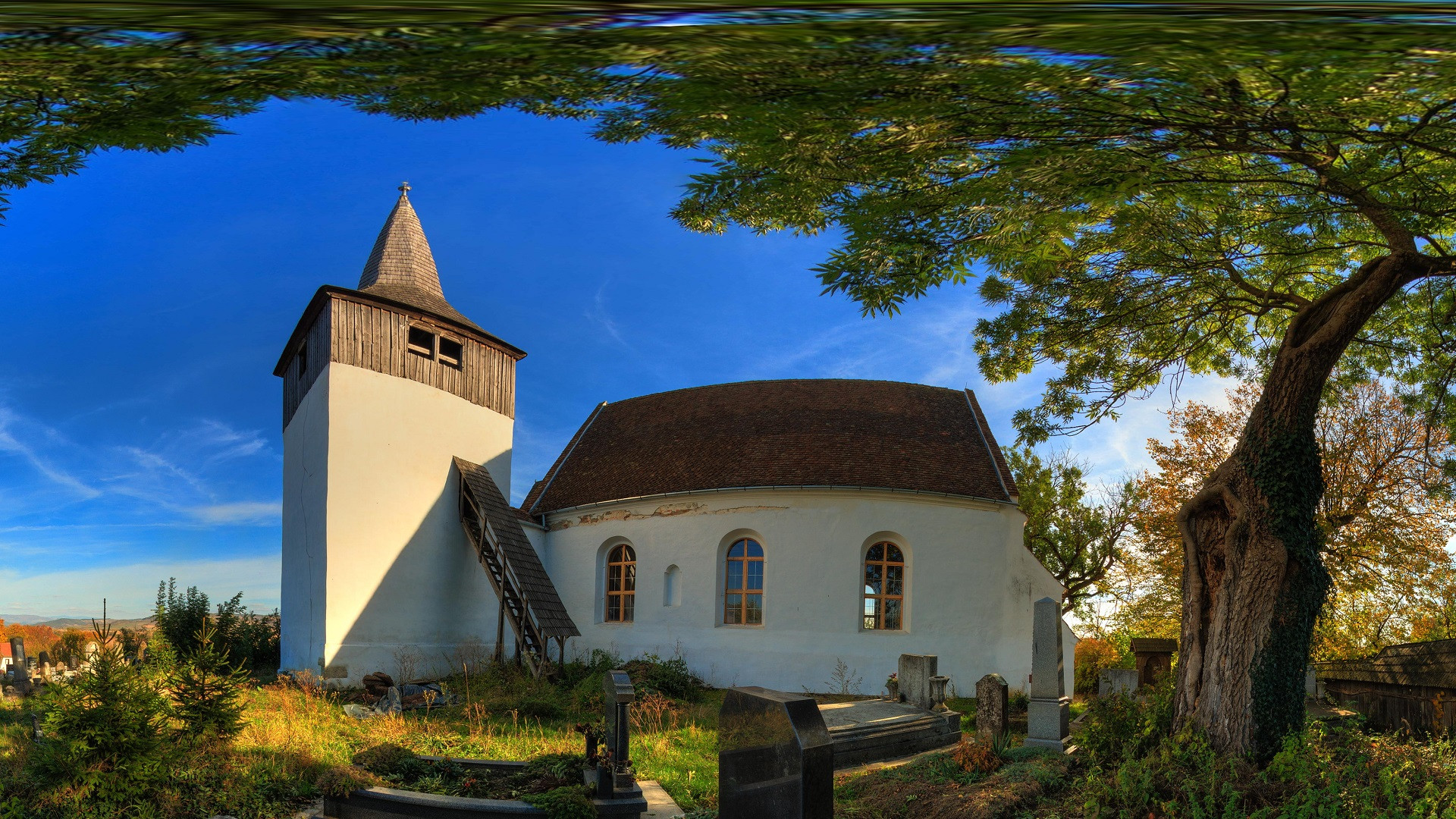Unitarian church - Nyárádszentlászó
Full description
Nyárádszentlászló/Sânvăsii, adiminstratively belonging to Nyárádgálfalva/Galeşti, is a value preserving settlement of the Közép-Nyárád region. Its name coming from king Saint Ladislaus from the Árpád dynasty already figures in the 1332 Papal tithe record as Sancto Ladislao. When counties were formed in 1968, its name was abrogated, but in 2003 its population claimed the restoration of the ancient settlement name through popular vote. Since then, there have been bilingual placename signs on both ends of the village. The interior area of the village is divided into Felszeg or Nagyút mejjéke, Felszeg, Piac tér and Tisztviselőtelep. The Nyomát stream crosses the village in north-south direction. The church hill is a special place not only from an architectural, but also from a botanical point of view. In the churchyard the trunk of one of the oldest ash trees of Transylvania defies time, it is estimated to be 350-400 years old. The two lindens, grown huge by now, were planted in the churchyard on the occasion of the millenary of the Hungarian Conquest (896).
The Unitarian church, covered with shingles and surrounded with a board fence is a precious monument. It bears the features of both Romanesque and Gothic style. Its oldest part is the sanctuary oriented towards the east, with a window from the Romanesque age. The stone door frame of the western entrance and the door leading from the sacristy to the ground floor space of the tower is Gothic. The nave with unpainted board ceiling gained its current form in the course of reconstruction at the end of the 15th and at the beginning of the 16th centuries. The tower also originates from this period. Originally the northern wall surface of the nave was decorated with a painting series of the Saint Ladislaus legend, but this was destroyed during the major repairing in the mid-18th century and due to the cutting of new windows. In the period 2009-2015 in the Transylvanian context especially valuable murals were explored in the Gothic sanctuary. The scene unknown so far may supposedly represent a crucifixion; its technique and style differs from, is earlier than the Late Gothic murals of the sanctuary. The restoration work was supported by the Rómer Flóris Project and was carried out by restorer Lóránd Kiss. The defence role of the square-shaped tower is indicated by the fact that it has no entrance from the outside. In the vaulted room under the tower the grave of landlord Mátyás Sigér, deceased in 1586, can be found. As regards the interior furnishing of the church, a bench from 1694 is worth mentioning, the front part of which is painted, as well as the pulpit “crown” and Lord’s table, commissioned by Judith Simén in 1784. The organ was made in 1841 from Klára Sárosi’s donation. The nave is covered with tiles, the sanctuary and the tower are covered with shingles. The 450 kg big bell was cast in 1498, and the 120 kg small bell was donated to the parish by Mózes Adorjan in 1925.
